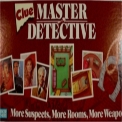Friday, January 7: Bandersnatches
THE SPACE BETWEEN
by Steve Steinbock

All these years I’ve been putting two spaces at the end of my sentences after the period (A/K/A full stop) and before the next sentence. There I was, smugly thumbing the SPACE bar twice, doing precisely as my high school typing teacher taught me. And now I learn that I’ve been wrong. Why didn’t anybody send me the memo?
The subject came up a week or so ago on Mystery Writers of America’s yahoo discussion group, EMWA. Essentially, it was explained, the two spaces made things easier to read in the days gone by when all letters were given the same space. But proportional spacing has rendered the old tap-tap irrelevant.
I can’t say I fully get the explanation. Why would two spaces make it easier to read? And what difference does it make whether the type is monospaced or proportional? I found this page at About.com, giving samples of both types of type, with two spaces after the dot and with one. I can see the extra space, so I suppose I can recognize more quickly where one sentence ends and the next begins. But I can’t say it’s any easier on the eyes.
The idea of double-spacing goes way back, but it’s not universal. The French never used two spaces after Le point. Then again, French spelling is so absurd that I dare not hold that language up as a role model. (Je vous prie, parleurs de Français, d’accepter mes apologies sincères). But if the French never needed two spaces, why should Her Majesty’s subjects, and by extension, Americans have used two?
This talk of monospaced versus proportional type strikes me as a smokescreen. The real explanation is so simple that no one will admit it. I think the two-space rule was a bad idea to begin with. Two hundred years ago Noah Webster unabashedly ransacked what he saw as obsolete spelling to make American Standard English simpler. He dropped superfluous letters like the u in colour or the me at the end of programme. Then again, an argument could be made that Webster’s changes were themselves imperfect.
The rest of you have probably long since figured out that only one space is necessary and are thinking Steinbock has fallen off his nut. But it’s a new decade. I’m going to make an honest effort from this day forward, in the spirit of conservation, to save those spaces. You never really know when you’ll need them.
The Stuff Between the Spaces
Speaking of empty space, I’ve just read a book and I can’t wait to tell someone about it. I’m not out-and-out recommending it. I thought it was great, but for several reasons (emotional, political, and grammatical) a lot of readers are likely not to like it.
The book? Blindness (original title: Ensaio sobre a cegueira) by the Portuguese writer José de Sousa Saramago. The plot is either one of a thriller disguised as a parable, or a parable disguised as a thriller. An epidemic of blindness strikes an unnamed city in an unnamed country. Very quickly, the victims are herded up and locked away in quarantine in an abandoned asylum. As the quarantine population increases, living conditions become unbearable and lawlessness takes over. Early in the book when an ophthalmologist goes blind, his wife pretends to have the sickness so she can stay with her husband. One sighted person surviving in a city of the blind.
The epidemic comes to be called “The White Sickness” because rather than experiencing darkness when effected, victims have the experience of seeing everything in uniform whiteness.
Saramago does a few stylistic things to help create a sense of blindness and the confusion it would cause for those accustomed to sight:
None of the characters are named. Characters are referred to only as the doctor, the doctor’s wife, the first blind man, the girl with dark glasses, etc.
No background or backstory is provided. Everything we ever know about the characters we learn from their interactions and their dialogue. The man with the eyepatch used to live in a tiny apartment. The girl with dark glasses lived with her parents. The boy with the squint misses his mother. That’s about all. And surprisingly, that’s enough. As a reader I very quickly became attached to the characters through their actions and interactions. By the end of the novel I was sorry to say goodbye to them.
The most radical stylistic element that Saramago used was the absence of quotations marks, and the general sparseness of punctuation. Dialogues all ran together, without paragraph breaks or quotation marks to distinguish who was saying what. I often felt myself cocking my head to one side, asking who said that? as though I’d been suddenly struck blind.
The book was both moving and disturbing, and without giving too much away, it was redemptive. A lot of readers have found the style and grammar unbearable. The sex and sexual violence and physical filth were very difficult. I’ve heard that advocacy groups for the blind have boycotted both the book and the film that was based on it, but I have to say that they clearly didn’t get it.
If you read the book, or have already read it, let me know what you think.
Incidentally, I was halfway through the book when we were struck by a snowstorm. When I went outside to shovel, for just a fraction of a moment I had the experience of The White Sickness.
So much for blank spaces.




















One space made typesetting easier when we switched from using typewriters to computers (I was told many years ago). A hard habit to break, but you’ll make it. An editor once told me she could guess the age of the writer by the number of spaces after a period. And yes, she was quite young.
The extra space sets off one sentence from another visually, albeit subtly. I intend to continue using two spaces. It just seems right to me. That young editor could probably make further assumptions about my age because I refuse to change.
I am an inveterate and unapologetic two-spacer. I’ve never bought the argument that proportional fonts in word processors render the practice obsolete, because unless you full-justify the text, a space is always the same width, even in proportional fonts. I regard it simply as good style, and I do think that it makes it easier to distinguish the ends and beginnings of sentences within paragraphs.
I also don’t believe that using a single space in any way simplifies typesetting. If a page is “typeset” using electronic media, it’s pretty much automatic. If a page is typeset using actual movable type, the typesetter isn’t doing anything he didn’t do before.
In HTML (Hypertext Markup Language, the language used to format web pages), there are two kinds of space, breaking and non-breaking. HTML will normally remove all the spaces in a string (“string” is computerese for a unified line of letters and characters) of spaces except one, so two-spacing accomplishes nothing. If you use a non-breaking space, though, HTML treats it as a letter and will not remove it or insert a carriage return after it (unless it is the last character in a string, i.e., followed by a breaking space). In other words, if you type 5 spaces, HTML will remove four of them, but if you insert 5 non-breaking spaces, HTML will treat that as a five-letter word.
Likewise, a non-breaking space between two words combines the two words and the space into a single string. This means that if the string comes at the end of a line and you’ve run out of room for the whole thing, HTML will not split the words up, placing one word at the end of the line and the next word at the beginning of the next line. Instead, it will move the entire string to the next line.
I’m too lazy to add non-breaking spaces after periods when I’m writing for Criminal Brief, though, although I have used them to indent the first line of a paragraph. I hate it when computer programs think they’re smarter than I am, but progress marches on notwithstanding.
I confess to using two spaces after a period unless I’m submitting to certain editors/publishers who prefer one space (and yes, a few of them do).
I’ve noticed too that some editors prefer underlining rather than italics, two hyphens rather than an inserted dash, three asterisks to indicate a scene break, etc., etc. But hey, I’m easy–I’ll march to whatever tune they like.
I like one space. Things go faster.
Most scientific (and other) abstracts etc. are one space required. I have no clue why. But there’s the thing they don’t give a rip. Do it or its trashed.
It is a habit I had to break. Two space to one space. It’s a mindset that at first faltered at the end of sentences while typing 90 miles an hour. Then all of a suddend it came without the hiccup.
I successfully mastered the one space.
Yippeeee!
I hadn’t heard about the changes in the “two-space” rule. I think about that and I think about my High School and College Journalism teachers who were sticklers for that. That’s where I got it from. Buuuut I could lax off I guess.
I’m making a note to read that book. It sounds fascinating.